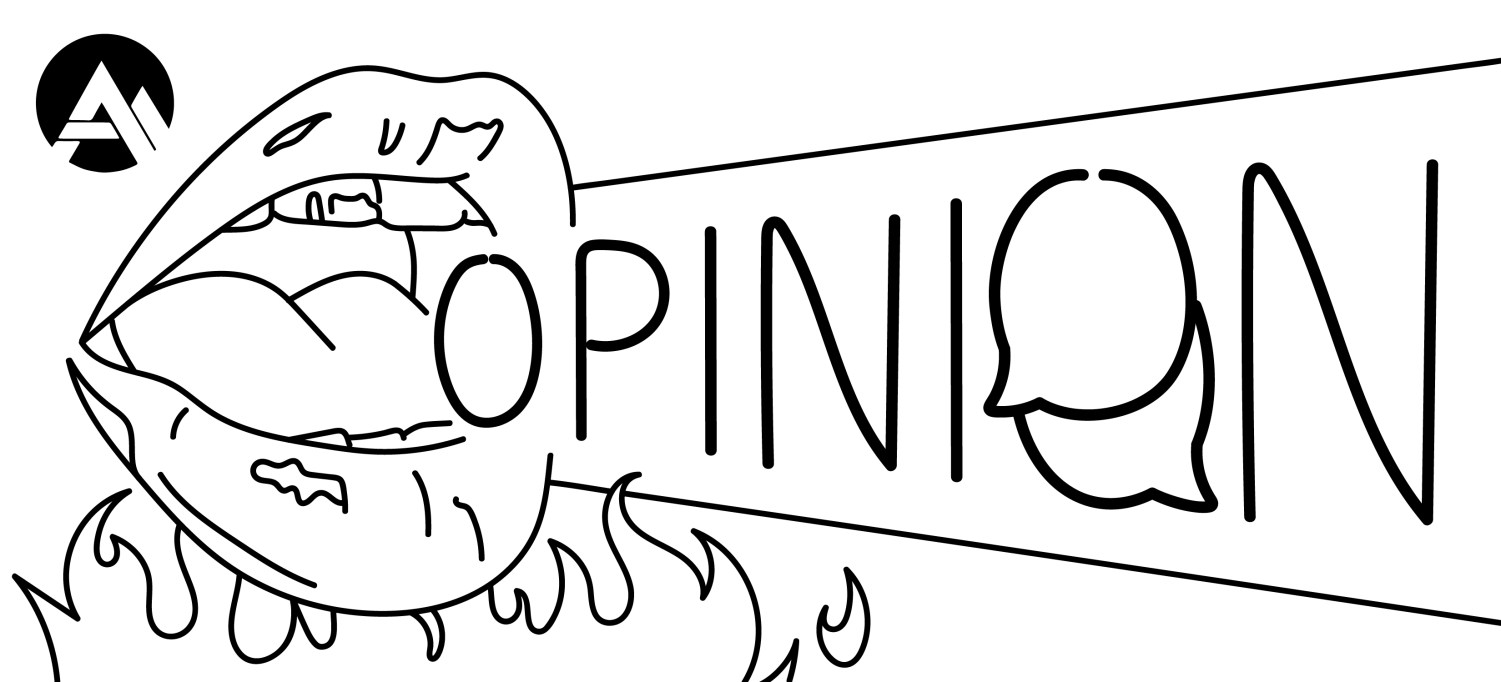OPINION: The problem with elevated Southern food
October 13, 2022
Upscale, chic and refined are words that should never be associated with traditional Southern cooking. But for restaurants like Over Yonder in Vilas, that is what they claim to be. These “elevated” Southern food restaurants take the down-home, fatty, unrefined and sloppy Appalachian style of cooking and turn it into something palatable for tourists and folks from off the mountain.
Or so they think.
The fact of the matter is that Appalachian food is already sophisticated. You don’t have to charge $26 — the real price, by the way, for the “chicken fried chicken” at Over Yonder — on a plate of chicken to make it worthy of tourist consumption.
Traditional Appalachian food was built on the philosophy of making the best with what you have. Wild game like squirrel, deer, rabbit and boar were the central proteins in old-time mountain cooking, while corn, apples, ramps and green beans were the core veggies. From these ingredients came the Appalachian staples of squirrel gravy, kilt greens, livermush, country ham and the magnum opus of mountain cooking, chocolate gravy. These Appalachian standards are replaced with fried chicken, gentrified collard greens and pimento cheese.
So why is it that these restaurants are ashamed of quintessentially Appalachian foods?
The answer couldn’t be more simple. There’s a long-held belief from those outside the region that Appalachian people are lazy, dirty, crass and unrefined. Even so-called “Appalachian” restaurants hold these beliefs. By not proudly serving an authentic Appalachian menu, they contribute to overall misconceptions of the region.
And it’s the same menu for all of these restaurants. Proper, another pretentious “elevated” country food restaurant, and Over Yonder both have the same gentrified tomato pie on their menus. Proper has a $15 tomato pie, while Over Yonder serves a “Tomato cobbler” for $27.50. $27.50 for tomato pie. For tomatoes, mayonnaise, cheese and crust. $27.50.
Over Yonder serves up the aforementioned $26 fried chicken plate, while Proper serves a more pared-down version for just $18.
There’s also a $30 shrimp and grits at Over Yonder, which is particularly ridiculous given that 18th century Appalachian folks didn’t even know shrimp existed.
Both menus are just misrepresented mash ups of foods that someone who has never set foot in Appalachia might think come from the region. And yet, Over Yonder continues to label itself as Appalachian. Directly from their website, they claim, “Our mission is to interpret classic Appalachian food in a modern yet casual way.”
This mission has failed.
Excluding the tomato pie, none of these foods are unique to Appalachia. Shrimp and grits come from the Gullah people of the South Carolina Lowcountry, while fried chicken was created by enslaved people making the best with the scraps they were given to work with.
Labeling these foods as Appalachian not only misrepresents the food of the High Country, but erases the cultural impact that Black people have had on the food of the south. Just about every traditionally southern food originates from enslaved people. Collard greens, beans and rice, ham hocks, fried chicken and dozens of other southern staples come directly from Black people.
Appalachian food, at its core, is a beautiful combination of Native American, Scots-Irish, Dutch and African American culinary traditions. Highlighting Native dishes like corn pone, or African dishes like black-eyed soup beans would make much more sense, as these are actual Appalachian dishes.
By claiming all food in Appalachia is southern food, or vice versa, you lose a lot of the detail and cultural diversity of the south. The Appalachian mountains can’t be compared to the Ozarks, and the South Carolina Lowcountry isn’t the same as the gulf of Louisiana. Yes, these areas are all geographically located in the south, but each one has its own cultural identity that shouldn’t be homogenized into a single culture.
With all of that being said, there are still restaurants around doing Appalachian food right.
Mary’s Kitchen, located at 486 George Wilson Road in Boone, is absolutely throwing down when it comes to Appalachian cuisine. Their hours are limited to breakfast and lunch, and just about everything they serve costs less than $5. Miss Mary is serving up livermush, county ham, and yes, chocolate gravy. Three of the most Appalachian dishes you can get. They don’t market themselves as refined or upscale because the locals who eat there know it isn’t necessary.
The seasoning that goes into making the livermush is delicate and done with purpose. The curing process behind the country ham is difficult and takes years of experience to master. And to even have chocolate gravy on the menu speaks volumes about their authenticity. These are the foods that have filled Appalachian bellies for centuries. This is real Appalachian food for real Appalachian people and those who want to eat like them.
So go on and let the tourists eat their $30 shrimp and pimento cheese grits. Give them a $17 plate of collards and pintos. Let them feel better about themselves for not eating the same food that backwards hillbillies eat.
Real Appalachians will stick to their chocolate gravy, country ham and livermush, thank you very much.














Robert J. Walters • Dec 29, 2022 at 3:20 pm
Red-eye gravy ??? … white-lake fish ??? … youse guys forgot those two
ACMA • Oct 20, 2022 at 9:45 pm
Thank you for bringing this issue to our attention. If we find that the establishments in question have in fact committed authenticity violations, they will be held accountable and their respective Museum Licenses will be revoked.
-Appalachian Culinary Museum Association
bp • Oct 20, 2022 at 12:50 pm
This is a great article if we were to exist in a black box of cultural singularity. Yes, it is true, a lot of these cuisines are born from poor and formerly enslaved people. And yes, this food has been heavily appropriated from its original cultural context – but the restaurants you mentioned are simply reproductions of an assimilative culture wherein cultural lines are increasingly being blurred and skewed from their original conditions. You seem to understand that given your mentioning of the cultural ambiguity of Appalachian food, but therein lies the contradiction of your article. Rather than faulting business owners who are trying to pay people a livable wage, source from local farmers, and reduce the use of animals in their cooking, perhaps you could focus on the atmosphere and processes (i.e. globalization, capitalism, heritage/cultural tourism) that allow for gentrification, inflation, tourism, etc… But also, from a more base-level point of view, none of these places are claiming that they are serving Appalachian cuisine…
For the sake of nuance (which this article lacks), I want to shed some light on the other dimensions your argument seems to conveniently leave out. I am sure you are aware that Boone is a tourist town (we are in prime-time tourism right now) and a lot of these businesses need this time to build enough capital to keep afloat during the winter months. Not to mention, BOTH of these businesses you have critiqued pay their employees a livable wage and offer food for them at the end of their shift. I am sure you are lacking this insight as it seems you have simply logged onto their websites and cherry-picked what you needed to sell your story. We are also talking about different scales of businesses here. These businesses employ people in different capacities and try and pay them, again, a liveable wage. Also employing enough people to run the business in the first place. There is also the risk of pitting small businesses against each other, which does no good for anyone involved.
From what you are arguing, I am then left to wonder what your purpose for writing this article is. What do you suggest? Do we remove tourism from Boone? How might we do this? How would we ensure that we keep people employed? How can we pay people enough money while also making sure the food is affordable? How do we ensure that Appalachian Farmers are being paid and are able to sustain their livelihoods? As you can see, the food system is a hard one to homogenize.
Hegemony does not solve any problems. It reinforces already existing problems and conflates what is just with what is easy. Plurality is complicated, and it is hard to confront. But by ignoring it with broad-stroked arguments like this, you cause offense and insight harm.
Dakota Hicks • Oct 19, 2022 at 11:06 pm
As one of the chefs at Over Yonder (also a local (born and raised) and a rotating local chef in the Appalachian region I’m going to respectfully disagree with you and you’re overly self-indulgent opinions about an industry that you don’t work in.
I’ll be sure to talk to our Farmers next week about getting some squirrel in for you. Thank you.
Benji C • Oct 19, 2022 at 10:34 pm
Lol the enemy here definitely ain’t the restaurants who source as locally & as in season as possible as well as pay folks enough to live here.
It’s the real estate agents, Air BnB owners, developers, and university admin who have regard for none of these things, and in fact, make living here a hell of a lot harder than it has to be. I hope you are able to find peace.
Max • Oct 19, 2022 at 9:43 pm
anyways
I worked for Over Yonder for several years and the amount of care they put into their employees and their well being is in-measurable. Andy is an amazing chef who sources food locally and adds a Louisiana twist to his food (hence the shrimp and grits)…. I love the food and care they put into creating an experience, and love the staff even more. Horrible take.
Emily Rodriguez • Oct 19, 2022 at 8:29 pm
This is such a lazy article. Simply listing prices off a menu with no care for how these small businesses compensate their employees, support local farmers, and give back to great causes like FARM Cafe and the Watauga Food Council. This platform could have been used to encourage students to purchase from the Food Hub, the farmers markets, or any of the numerous restaurants that source locally produced food such as Proper and Over Yonder. To me, Appalachian culture is about being resourceful, doing a lot with a little, and giving back to your community. Those are the qualities of the small business owners called out in this article. The author should consider what they could learn from such people.
JH • Oct 19, 2022 at 8:13 pm
One of the worst takes I’ve ever seen on food and restaurants in Boone. Clearly, the author has no clue what they are talking about. This article is a shame, and does not represent The Appalachian well. I surely won’t be reading more articles by this publication.
Jim Hamilton • Oct 19, 2022 at 8:08 pm
Why stop at the local restaurants? Surprised she didn’t criticize the Farmer’s Market for taking up parking places and the Food Hub creating competition for our chain grocery stores.
Will • Oct 19, 2022 at 7:35 pm
First, you’re other article is really well-written. It’s hard to write with biased because of the degree that you might get backlashed. It’s vulnerability and I will always respect that. But, with this article (that almost seems like a hit piece of two restaurants), you really show that you haven’t done your research on the service industry in Boone.
Being in the restaurant industry, I know multiple people who have worked at these restaurants and know that the owners of this restaurant take care of their employees and the people who provide them ingredients. Buying from local farms (which both these restaurants do, if not grow their own) puts money back into the community rather than exporting it to large companies.
If you had done your research, I bet your opinion would’ve changed with the first conversation with a service industry worker.
Not only have they upped their menu prices to support their employees, but they’ve also done this because the people who curate these dishes, the chefs of these restaurants, put time and effort into them. Lord, they probably put time and effort every time one of these dishes are served. I would also ask that you or anyone who agrees with you on this piece to consider the background of the owners and where the restaurant is.
I know for a fact that Over Yonder almost went out of business last year not because of COVID, but because of rent costs. Consider the outside forces in the Appalachia community that are preying on local businesses and community members. While I can’t say for certain, Proper is on King St. and almost certainly has to pay a rent on the building as well.
Other than that, you seem to gatekeep the southern food that you also praise. Culturally, the background of this food falls on both the chef and the consumer to understand why and how this food is being served to them at a certain place. Most chefs that I know in the Boone service industry take a very serious platform on the food they serve, especially with roots going back tens to hundreds of years old. Yes, these dishes must be served with the history of how they came to be, but you’re really coming at it from the wrong way.
Finally, though, you talk about price. With the combined effort of paying employees a livable wage, paying local farmers rather than corporations from outside Appalachia, and knowing their own artistic worth, these places have to raise prices to achieve these goals. Is it so wrong that we raise Appalachia food up to the degree that other food is served at. Price should be secondary, but with these other combined efforts, is it so hard to realize that these places are doing their best?
Both places serve insanely good food, by the way. It seems like you haven’t actually eaten at either of these places. I recommend it because both put time and effort into each plate.
Leeky Leeks • Oct 19, 2022 at 6:54 pm
I must say after reading this it took me a while to gather my thoughts. As one of the people who’s family helped found Watauga county as well as the town of Boone, i feel like this person lacks real understanding of what they are speaking about. I am not sure which is worse the arrogance to assume they are the sole expert on what is southern or Appalachian or the entitlement to attend a university that is the largest part of gentrification in North Carolina, then talk about others in such ways. I truly pity this human being as they probably are the type of student that thinks they are smarter than their professor. No sadly child your best bet is to stick with the fine dining of campus as no doubt you have riled a hornets nest so to speak. I would be ashamed to show my self in any reasonable establishment in Boone or Watauga county after writing such a arrogant and entitled piece. Even worse is the child no doubt has no idea they are a living representation of what they claim to hate . Gentrification personified by Appalachian State and its very entitled children.
Will • Oct 19, 2022 at 6:52 pm
Man… if you had actually talked to the workers at these restaurants, you would’ve found out entirely different points of view. Respectfully, I think there was a major lack of research done before posting this.
The two restaurants you attacked have some of the finest people working/owning there. They use local ingredients to put money back into the community. They treat their employees as well as they can in our late-stage capitalist America.
Joe • Oct 19, 2022 at 6:42 pm
>mfw all i eat is cookout and arbys
J A • Oct 19, 2022 at 6:26 pm
Andy and Angela have forgotten more about Southern food than you will ever know
Seth Sullivan • Oct 19, 2022 at 6:23 pm
23 year resident and Local Restaurant owner. It is pretty tight to have the student paper at our university taking shits on locally owned and operated businesses.
Restaurants set prices based on the price of goods, the price of labor, and the other costs that we are responsible for. The restaurants you mentioned serve menus that are mostly if not completely sourced from local farms and purveyors. Literally keeping their money in the high country.
I agree with you most southern and Appalachian food ways have roots in African American culture. I bet if you had chosen to speak to either of the owners of these restaurants before savaging them for clicks, they would have told you that they are aware of that too and feel that debt.
If they weren’t too busy actually working in their kitchens..which they both do.
Over Yonder Rules, and Proper is the best restaurant in downtown Boone, and both owners stand by their employees and work along side and sacrifice with their people.
I’ll remember this when y’all come calling for advertisement dollars.
Seth Sullivan • Oct 19, 2022 at 6:29 pm
Also! you treat Appalachia as some giant cultural monolith in this article. And call the food sloppy.
My grandmothers food was beautiful, and she worked hard as shit on it, there wasn’t anything sloppy about it.
Delete this Sloppy article.
Ellen • Oct 19, 2022 at 5:52 pm
Attacking small, local businesses rather than pointing out actual threats to our community is very disappointing. No words on rapid development? Landlords who take advantage of residents? The University overflowing the town with more than it can handle? No, it’s definitely pricey homemade collards making this town collapse.
These restaurants provide so much not only to their local community, but to their workers. Prices can be higher for reasons such as the current economy, locally sourced food, AND on top of that these businesses still pay their workers a living wage!
Over Yonder and Proper are very beloved local businesses, with owners who put so much love into what they do. It’s shameful anyone would ever throw the word “pretentious” at them. You’re angry at what they serve there…but who’s making you go? Liver mush can be enjoyed within the comfort of your home! Appalachian culture is diverse, beautiful, and ever changing—there’s no “right” way to do it. But these places and their owners deserve so much respect and love for what they do. Come work a shift sometime and see what it’s all about!
Emily • Oct 19, 2022 at 5:10 pm
I can respect the push for restaurants to serve more authentic Appalachian food and for the area to preserve Appalachian roots. Though, the delivery and method are hitting me as out of touch, misleading, and incorrect. These restaurants do indeed sell “Appalachian food”, though you are correct- not all of their food is straight out of Appalachia. However, Appalachia is a huge region an encompasses a large portion of the eastern US. From Mississippi to NY, even Pittsburg is appalachia and it’s a big ole city. So, the food and roots of food in this region are extremely diverse. Appalachia has been full of wealthy, poor, enslaved, and working people. This article seems to perpetuate the idea that all of Appalachia was poor and so everyone in Appalachia were eating the things you listed. This is not accurate and further perpetuates the ideology that appalachians have been trying to fight for decades. Both upscale and cheaper options can indeed exist at the same time and both of them can exhibit Appalachian influence in their food.
Additionally, it seems energy could have been better spent writing an article about restaurants and owners in the High Country that are not taking care of and giving back to their communities and the very Appalachian region they reside in. Seems the beef is being put in the wrong direction? Over Yonder provides fair wages and benefits to their employees. These things do not come cheap and will not happen with a $5 menu. I regularly eat at Mary’s and can assure even her menu is not under $5 anymore due to rising food and operational costs. These establishments have vastly different forms of operation. Mary’s kitchen has at most 3 employees at a time, where as proper and Over Yonder will have 20.
Appalachia is also not just it’s past and is ever evolving and growing, like everything and everyone else. Yes, there is traditional and historical food and meals. It would be ridiculous to expect restaurants to stick to a rigid and strict way of cooking for ever because of what used to be. Don’t get me wrong, I appreciate preserving culture and acknowledging roots. However, this can be done with some change as well.
Jamie Goodman • Oct 19, 2022 at 4:59 pm
First of all, I’m a native Appalachian and I have zero problem with folks like Proper and Over Yonder taking classically overcooked and fairly unhealthy foods from the South and Appalachia and bringing them into the modern age. I grew up eating my grandmothers traditional cooking just like the restaurants you exalt and let me tell you it isn’t all that great. Secondly, Proper’s website clearly states they are a take on SOUTHERN food, not Appalachian food. Thirdly, Over Yonder does not claim to be traditional but lists their mission is to “interpret classic Appalachian food in a modern yet casual way,” s which doesn’t seem in any way disingenuous (and is in fact VERY delicious and worth the $). And lastly, as a journalist and editor myself, I have to say this article would have served you and your readers much better if you had framed it as a tribute to the classic restaurants like Mary’s that you like rather than a slam on ones you don’t. Trashing others smells strongly of sensationalism and only serves to sully further the world of journalism whose reputation is in dire straights right now as it is. Use your power to do good, not thicken the mire.
travis r • Oct 19, 2022 at 4:57 pm
Do you have any idea what the costs of running a restaurant are? Or, more specifically, running one with a focus on locally/regionally sourced & high-quality ingredients all the while paying your employees a living wage? I wonder, does Mary’s buy produce and meat from local farmers? How much do they pay their dishwasher? What kind of benefits & perks do they offer their employees?
I’ve never heard the owner/chef or anyone working at Proper ever refer to their menu as either Appalachian or elevated.
What exactly do you mean by “gentrified” tomato pie? Also, chocolate gravy isn’t strictly an Appalachian cuisine, fyi. I’ll echo MuChao in that your presumption to assume the VOICE OF APPALACHIA is laughable.
This ‘opinion’ piece reeks of a crappy yelp review and an unpaid advertisement for a business (seriously? dropping Mary’s address in the copy??).
It is a shame that you couldn’t find another hot take to write about that didn’t completely sh*t on a local business – especially one owned & operated by a person who’s been a caring, giving & integral member of this community for longer than you’ve been alive.
Your ire is completely misguided, ill-informed and bush-league. I hope that you can find something real & meaningful to propel your journalistic aspirations.
N • Oct 19, 2022 at 4:53 pm
Howdy, I used to work at Proper and I know at least two people who’ve worked for Over Yonder. Over Yonder takes excellent care of their employees from what I’ve heard and paying employees a living wage should be considered when evaluating pricing.
Secondly Proper is Southern food, not Appalachian food, and isn’t shy about it. If you go to her website notice it says “homestyle Southern cooking…” and “Proper is an homage to a Southern upbringing…”
I see your broader message and don’t ultimately disagree, though I think it applies to more kinds of food than Appalachian.
B c • Oct 19, 2022 at 3:57 pm
As a Watauga Native that has worked in the restaurant industry most of my life I can say without a doubt the author has no idea what they are babbling about. I grew up here Dirt poor , worked in pine trees and tobacco . Used a pit out house for those who know what it is. Having said that I can tell you that Over yonder is one of the places I worked where the owner cared about his workers and his food . Top quality hand made food from scratch . He had more years of cooking experience than most wanna be girdam Ramsey’s combined. 99 percent of the garbage up here is about as hand made as the Sysco truck it rolled off of Andy osnt just a great chef liked and admired by the community for his food , and what he has done to help the community here. One of the few humble good people I know . When it comes to gentrification well ASU is the king of that running off locals so over priced student housing is all that’s left. I doubt yonders is hip enough for most students a f that’s great because he makes damn good food vs fried garbage or what ever is the current trend . Maybe one day when you have workex in the industry 30 + years like myself I’d care about your opinion say like Great chefs in the area Like Ken , Dom, or Sam. But like my grandpa said opinions are like well and everyone has one . It’s just the weight of this one is worth about as much as. Leaf in a Floridiots car . B.C
Sarah • Oct 19, 2022 at 3:41 pm
Hey, local here.
Not sure why this article is targeting small restaurants who source directly from local farmers and pay their employees a living wage? From someone who works within the industry, these higher prices are better understood. From the outside, I’m not sure why you are even speaking on this. These restaurant owners care so deeply about their community and their workers. Shameful anyone would call them pretentious.
Perhaps look to the mass amount of chains/ other unsustainable development that is currently swallowing the high country. These corporations have far more of a detrimental affect on Appalachian culture than anything. Attacking local restaurant owners completely bypasses these very prevalent, dangerous issues that these corporations have brought with them. They are to blame for gentrification and insecure housing, not upscale tomato pies.
Appalachia is a culture that extends beyond North Carolina and its restaurants. And as you said, there’s a great range of options here in Boone enjoyed by locals and visitors alike. Keeping food localized through surrounding farms, and paying workers a liveable wage is something that should absolutely be praised.
Troy F. • Oct 19, 2022 at 3:22 pm
Bad take
Food costs have gone up since covid and prices reflect how the employees there are paid and treated.
Over yonder and proper aren’t evil- they’re taking care of their people,
Appalachian locals,
and you’re critiquing their menus?
Missed the point completely.
Stephanie holt • Oct 19, 2022 at 3:21 pm
This article is completely & utterly out of touch with the service industry & is a gross misrepresentation of those restaurants. Did you even talk to the staff of Proper or Over Yonder before writing this? Did you consider that restaurants often increase prices in order to pay their staff a livable wage or, in the case of Over Yonder, to provide benefits to full time staff? They could sell food for less, but then the people who work at their restaurants, the same people who call Appalachia & this community home, wouldn’t be able to afford to live.
I’d also like to add- have you ever eaten at either place? Because all the “Appalachian standards” you say they don’t sell they in fact have sold or do currently sell.
Furthermore- if you’re going to take a dump on restaurants in this town- maybe don’t go for the ones with owners who are respected and loved by this community. Maybe talk to service industry workers & go write about the restaurant owners in this town who don’t pay livable wages, are racist, sexist and/or homophobic & who actually deserve a public critique.
Jerry Sanders • Oct 19, 2022 at 2:34 pm
Hi. Local here. There seems to be more concern in this article with small restaurants who source from local farms rather than the large amount of chains/ other unsustainable mass development quickly consuming the high country. Coming at local business owners who put so much love into their restaurants, workers, and community by calling them pretentious completely bypasses the actual problems we have here.
Yes, these restaurants have higher price tags—because they are locally source and they actually pay their employees living wages! Working in such an industry would give you a better understanding where the prices are reflected. With that, no one is forcing you to eat here.. to each their own at the end of the day.
Lastly, I would also look up the term gentrification before applying it to food items. Rather, I would look to the University and surrounding housing market who are making living here quickly unaffordable for those who have been here the longest.
se • Oct 19, 2022 at 2:20 pm
I totally understand what you’re getting at here. As a southern native myself, the same thing has happened with a lot of foods from my neck of the woods too. It’s like food gentrification; taking poor peoples’ food ideas to remarket them for rich people. Southern food isn’t supposed to be expensive or posh, it’s just supposed to taste good! A lot of rich people are going to get in the comments and disagree with you but the food we grew up with used to be called unhealthy and cheap for the longest time until recently and I don’t think many of them really get the irony of it.
Jamie G • Oct 19, 2022 at 5:09 pm
I’m an Appalachian native and I know for a fact that most of the restaurant foods the author alluded to like country ham, grits slathered with butter, deep wells of sausage or redeye gravy, etc — while very delicious — are definitely NOT healthy. And that also is not what my grandmother, a many-generations deep Appalachian woman from Mouth of Wilson, served on a regular basis. That was Sunday dinner (aka just past noon). Regular meals were much simpler in nature.
Catherine • Oct 19, 2022 at 2:16 pm
Propers website literally says “Homestyle Southern Cooking” … Did the word “Southern” trigger such a reaction from you that you had to call the restaurant “pretentious?” For what? Serving collards and not liver mush? Being a nice place for locals to go to for maybe a special occasion or event? Same for Over Yonder. Both of these places have done a lot for the community. Maybe ask the owners how they contribute to Boone other than being upset about what’s on their menus.
Jaime Dean • Oct 19, 2022 at 1:03 pm
I disagree with this entire article, and I think it’s bad judgment to throw two small, local restaurants under the bus. Honestly you should be ashamed and I think an apology is warranted to both Proper and Over Yonder. These two restaurants are two of the most consistently good restaurants in this area and Andy Long and Angela have both done amazing things for this community year after year. I also have a high regard for how these owners treat their staff which has become an ever increasing issue in the service industry. It seems that you make the assumption that both of these restaurants are ashamed by Appalachian foods, but what proof do you have other than your own opinion about it? Also I’d love for you to explain what “gentrified collard greens and gentrified tomato pie” actually means. Until you have experience running a restaurant, and dealing with supply chain issues and the rising cost of all products, maybe you should stay in your lane
Catherine • Oct 19, 2022 at 10:41 am
Ok so not only did you just advertise a locals favorite spot but you attacked two restaurants who have done a lot for the Appalachian community. Not sure why you’re so upset that these places clearly attract people who enjoy their menus. I hate tourists as much as the next person. However I really don’t understand the point of this article. Are they on the expensive side? Yeah, but to call them pretentious for not serving your favorite “mush” is pretty obnoxious. Propers website literally says “Homestyle Southern Cooking”.
In your last article you said, “I want as many people as possible to experience how magical and special this area is. I’m not some grumpy local sitting on my front porch shaking my fist at the students and tourists, although sometimes I’d like to“
If that still holds true, why didn’t you actually talk to the owners of these restaurants you mindlessly bashed before spitting this article out?
AppScholar • Oct 19, 2022 at 9:12 am
Great opinion piece.
I had a bowl those high-dollar shrimp and grits once, mostly I just wanted to see the place. Now every time I pass by “Over Yonder” I have an overwhelming desire to projectile vomit.
Of course, there are also two Mast General Stores to remind us of the Floridian invasion of Appalachia.
If only we could borrow a phrase from Romulus Lenny and rename it “Heathen Valley.” I wonder if tourists would still flock to the area or find somewhere else to get their Andy-Griffith-feel-good-mountain-visit kicks?
App Scholarer • Oct 19, 2022 at 7:16 pm
Romulus Linney*
Don’t condescendingly quote someone then spell their name wrong. Lol.
BCRich • Oct 19, 2022 at 7:38 am
Gatekeep much?
MuChao • Oct 18, 2022 at 8:35 am
And now you’ve just publicly given away one of the areas local secrets (Mary’s) for tourists to find out about. Well done. Weren’t you just griping about how much town has changed due to tourists and second home owners in your last column? (which I wholeheartedly agreed with, btw), and now you want to give them another place to descend upon?
Over Yonder might be expensive, yes, but Chef/owner Andy Long has said since they first opened that his cooking is greatly influenced by his roots in New Orleans.
If I want a solid Appalachian breakfast it’s gonna be Mary’s. If it’s a special occasion, or I’ve got family in town and want to take them someplace nice for dinner (cause as you said, Mary’s ain’t open for dinner), it’s gonna be Over Yonder.
There’s plenty of room for both. Heck, Over Yonder doesn’t even serve breakfast, so there’s not even a whole lot of overlap, but you seem pressed to find something to complain about. You’re clearly projecting when you claim that both Proper and Over Yonder are calling you a “backwards hillbilly” (I dare you to find any time when either have ever stated such things.)
Finally, Appalachia is not monolithic, yet you seem to want to take up the mantle of representing the only “true” Appalachian person. Arrogant much? It sounds like you’ve never spent much time in the Appalachian region outside of NC (don’t forget: it stretches from Alabama to New York.)
AppScholar • Oct 20, 2022 at 8:02 am
MuChao,
Appalachia does not end in New York. There are three distinct regions, southern, central, and northern. Emma knows this, but she is local, this is her family’s “Appalachia.”
The northern most counties listed under the Appalachian Regional Commission are in NY, but if you go by ARC’s definition, which is more socio-economic than topographical, there are also “Appalachian” counties in Mississippi.
Many locations in other regions of Appalachia mined Coal, they are now paying a heavy price. Here in the Blue Ridge, we mined tourist and now we are paying the price. Young professionals are moving to Ashe and other counties to find homes, we have an increase in the number of first time homeless. People in their 60s and 70s are losing their housing. The list goes on.
But, please, enjoy taking your family to feast on the New-Orleans/Appalachia cuisine.
Tell Aunt Bee and Opie, I said “hi.”